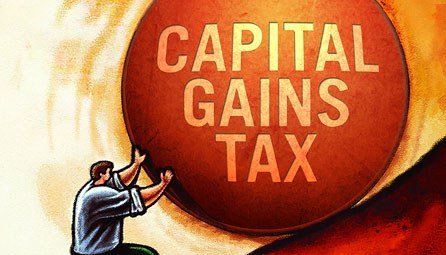By Vinit Goenka
What is Long term capital gains?
Long term capital gain (LTCG) arises out of long term capital asset. If any asset is held by the owner (of the asset) for a period exceeding 36 months, or for a period exceeding 12 months in the case of shares or securities, the asset is considered as Long term capital asset. When a long term capital asset is sold at a profit, it is called LTCG. Such a LTCG is exempt from tax and this is how some take advantage of this for money laundering. (Benefit of exemption, however, is not available in respect of preference shares, off market transactions, cooperative society shares, liquidation of company, unlisted shares, and buy back of shares.)
How is it done?
Usually, if there is a collusion between the owner (of the asset) and Broker/ companies. There are 2 ways to execute this type of transaction:
Type 1
The purchases of shares are accompanied by a backdated contract note showing the purchase of shares by the owner (of the asset) at less than a rupee or just a few rupees per share. The purchase consideration could have been paid either in cash or by cheque. After a year or so, the owner (of the asset) sells such dematerialized shares in secondary market at the prevalent price and receives payment through cheque thereby converting Black money into white.
The general modus operandi is as follows:
- With the collusion of broker, shares of a company are purchased for miniscule consideration. The broker issues a fake, backdated contract note.
- After a year, the shares are sold by the owner (of the asset) through the same broker. In the meantime, the share prices are rigged by the concerned broker to an abnormally high level.
- The shares are now sold by the owner (of the asset) and the sale consideration is received in cheque. The sale consideration is in fact first paid by the owner (of the asset) in cash to the broker, off the books. This cash consideration which is introduced in a banking channel by routing through a number of accounts, finally reaches the accounts of the broker. With this amount, the broker pays the consideration to the owner (of the asset).
- Thus the asset holder’s own cash is introduced and comes back in the form of LTCG which is exempt from tax, thereby converting Black money into White.
- For arranging these transactions, the broker typically charges commission.
Type 2
In this type of collusion, listed companies which are not actively traded (penny stock) on stock exchanges, first raise the funds through series of preferential allotments to select individuals. Subsequent to such preferential allotments, the share price of the company increases manifold which is usually not justified with the performance or Net profit after tax (NPAT) or Earnings per share (EPS) of the company.
The general modus operandi is as follows:
- The owner (of the asset) identifies the penny stock and arranges for a meeting with the promoter/ management of the company.
- The management of the company promises to issue shares on preferential allotment basis when the share price is low.
- Sometimes, after issue of preferential allotment, the company issues bonus shares.
- Company increases the price of its shares, either by circular trading or by other manipulation to manifold.
- The owner (of the asset) sells the shares after the lock in period of 1 year as per SEBI guidelines, pays Securities Transaction Tax (STT) as applicable and claims for LTCG which is again exempt from tax. (LTCG is taxable if STT is not paid)
- When the owner (of the asset) sells the shares, the sale consideration is received in cheque against his cash either through broker (as in type 1) or through the company by way of buy back of shares.
What is done to stop it?
Income tax department investigates alleged trading/ investment in shares and securities with collusion with any listed companies or share broker by conducting search and survey or by asking details u/s 133(6) of the Income Tax Act, 1961.
Income Tax department has various sources from where information can be received such as Securities Exchange Board of India (SEBI) in case of manipulation in capital market.
SEBI first conducts enquiry on its own for alleged involvement of share broker or listed companies in alleged price manipulation of the shares, and after conducting such enquiries, SEBI passes an order debarring/ imposing monetary penalty, as the case may be, on the entity involved in the manipulation. Then, it shares the information with other agencies like the Income Tax Department. On receiving such information, IT Department investigates upon the owner (of the asset) involved in the manipulation and tries to prove the LTCG as bogus and is added u/s 68 as cash credit.
P.C LinkedIn




